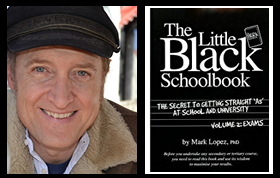Dr Mark’s The Meaning in a Nutshell
Thomas Keneally, The Chant of Jimmie Blacksmith (1972)
Thomas Keneally’s novel, The Chant of Jimmie Blacksmith (1972), is a fictionalised account of the Aboriginal bushranger Jimmy Governor that is used by the author as a means to present a critique of Australian history and society at the time of federation, which, in turn, serves as a critique of Australian society at the time he wrote the novel in the early 1970s.
The novel is therefore a work of revisionist history that seeks to undermine the triumphant image of Australia as representing the successful establishment of British civilisation on the Australian continent, complete with democratic institutions and an egalitarian ethos. Keneally’s novel seeks to replace that image with a darker story of the dispossession and maltreatment of the Aborigines, and of a society rife with racism, sexism, exploitation, and injustice.
The ‘Chant’ of Jimmie Blacksmith, referred to in the title, is the chant of Aboriginal rebellion against white racist oppression. The novel is meant to generate sympathy among white readers regarding the historical plight and suffering of the Aborigines, both historically and at the time the book was written.
Keneally uses the character of Jimmie Blacksmith to expose the policy of assimilating Aborigines into mainstream society as presenting a false promise to Aborigines, with Jimmie Blacksmith’s attempts at assimilating bringing him many disappointments. Keneally also uses the disappointments of Jimmie Blacksmith to criticise moving away from tribal culture as misguided and counter-productive. Keneally also inverts the accusation of ‘savagery’ applied to indigenous Australians by whites to imply that the brutality in the half-caste Jimmie Blacksmith originated more in his white ancestry rather than in his Aboriginal inheritance.
While Keneally encourages his audience to sympathise with Jimmie Blacksmith’s motives for rebellion, and to see Jimmie Blacksmith as a symbol of Aboriginal resistance, he stops short of transforming Jimmie Blacksmith into a hero, as has been the case with other bushrangers, like Ned Kelly. Unlike Ned Kelly, the victims of Jimmy Governor were mostly women and children. Consequently, Keneally takes care to encourage an appreciation of Jimmie Blacksmith’s motives without condoning his brutal actions. Jimmie Blacksmith’s full-blooded Aboriginal half-brother Mort serves as Jimmie’s conscience, criticising the murder of women and children as immoral, a stance that distances both the Aborigines as people, and the author, from being perceived as endorsing horrific acts of violence.
Student resources by Dr Mark Lopez
© Mark Lopez 2021 All RIGHTS RESERVED
The purpose of the concise notes of Dr Mark’s The Meaning in a Nutshell is to provide much needed help to students seeking to unlock the meaning of the texts with which they have to deal. (More elaborate notes are provided in lessons as part of my private tutoring business.)
Subject: The Chant of Jimmie Blacksmith meaning, The Chant of Jimmie Blacksmith themes, The Chant of Jimmie Blacksmith analysis, The Chant of Jimmie Blacksmith notes
